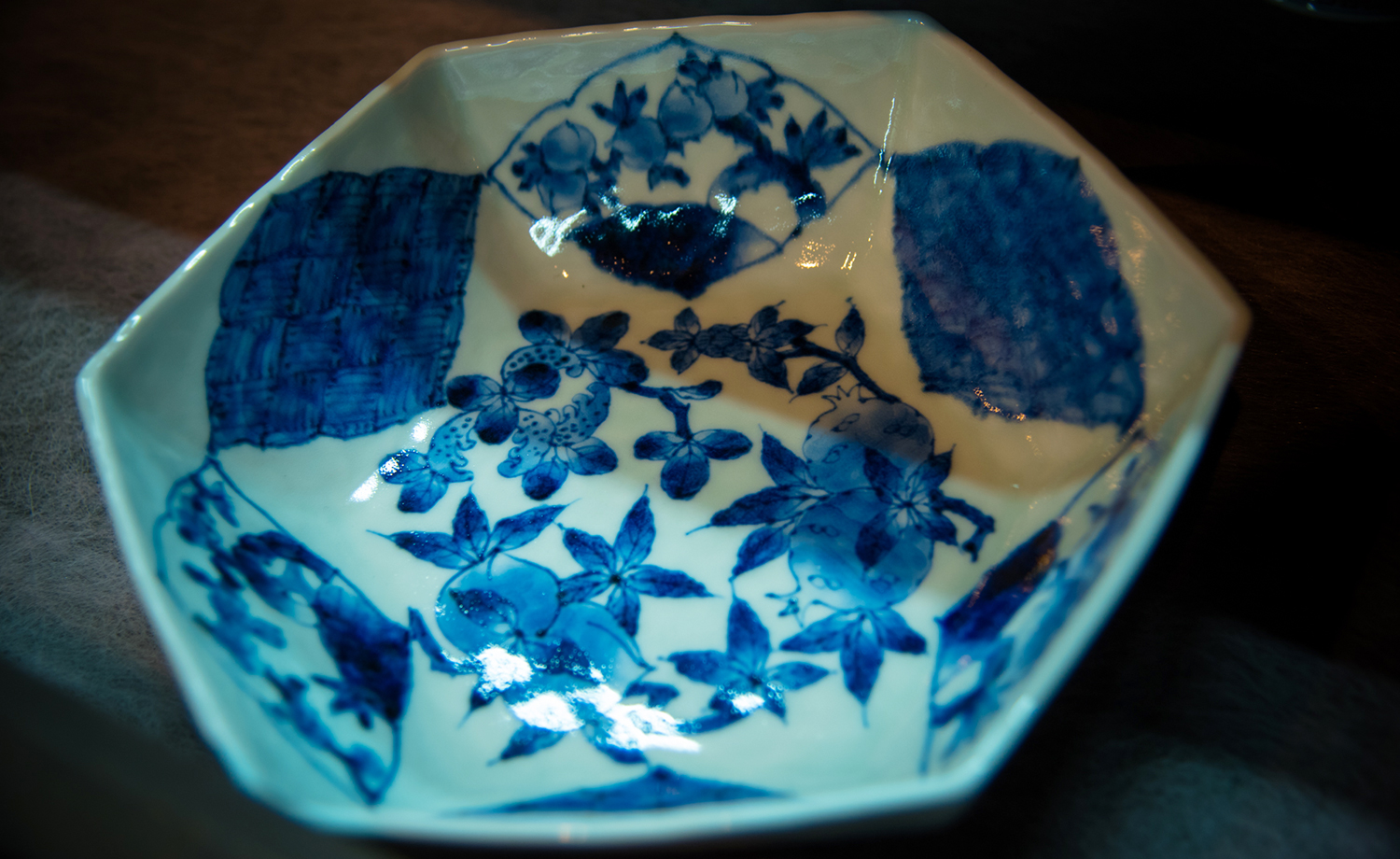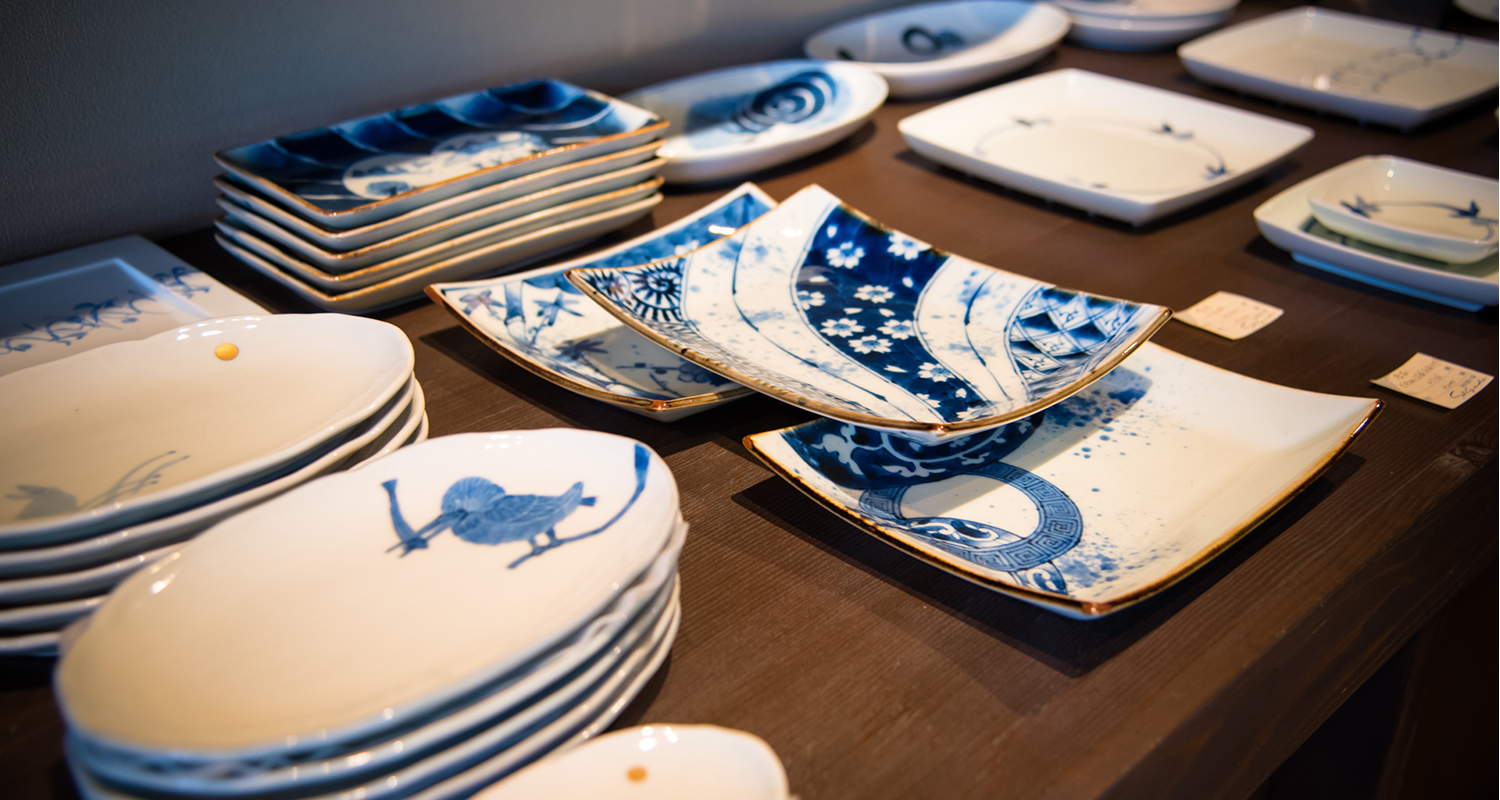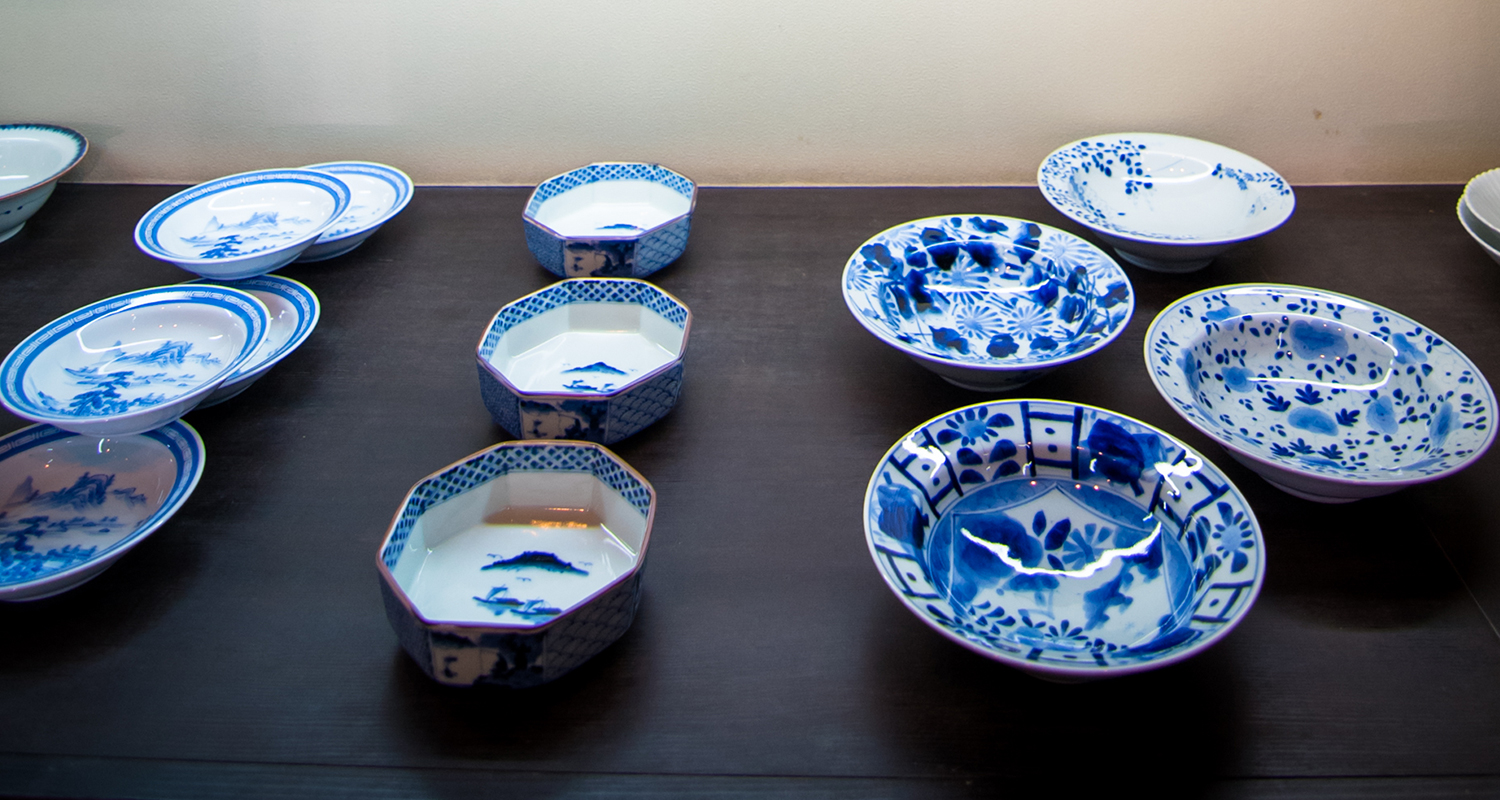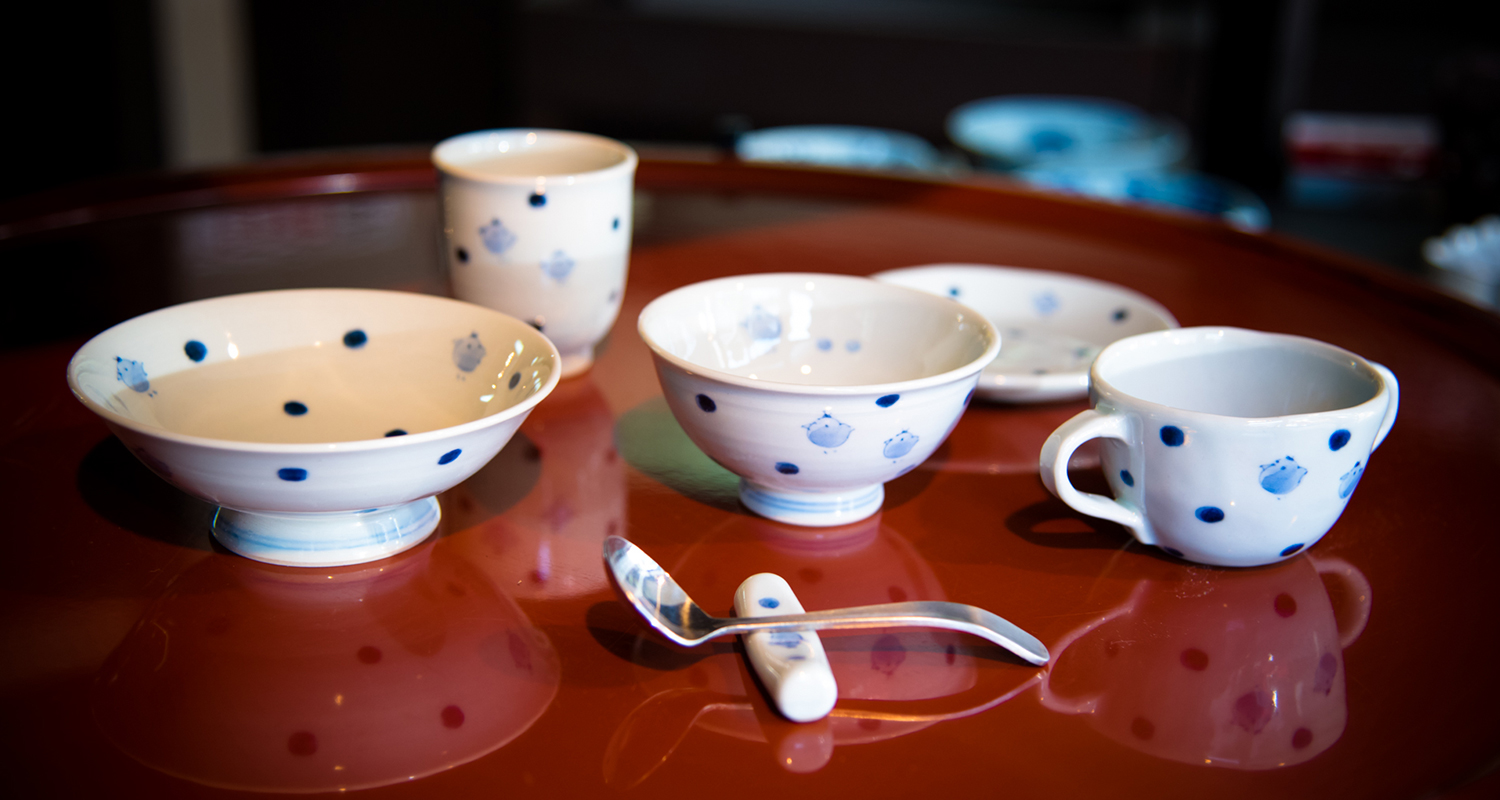Arita ware and me
I was born in Arita town and through my life I was surrounded by Arita ware. Thinking of the environment I was raised in, no wonder I became attracted to Arita ware.
When I think back to my childhood, Arita ware was used not only for seasonal events but also in the daily use. In their daily lives most of the people in Arita including children are involved in something that has to do with pottery.
When I took over the shop from my father, I could not thinkof any other pottery shop than Arita ware. Needless to say, all the products in our shop are Arita “Sometsuke “tableware. Some customers asked me why I specialized in Arita ware and why I didn’t sell beautiful blue-and-white porcelain from other regions.
Now I can explain the high quality and the reason why I focus on the Arita ware, but at that time, I couldn’t give any good answer to the customer.
The reason was that our shop was an extension of my hobby and I only sold that had my personal preference.
However, nobody can give a clear answer of what Arita ware is. There is no exact definition of Arita ware. And even we, at Seigadou, a specialty shop of Arita ware, can only give a simple definition that Arita ware is ceramics made in Arita town and manufactured using traditional materials in a traditional way.
My feeling of attachment to Arita ware is as strong as my feelings of my hometown, the town of Arita.
All the Seigadou products are selected through my eyes and soul, and I am confident of the quality of each product inour shop.
In other words, I select only the true Arita ware which is manufactured using traditional techniques enriched by water, air and the people of my hometown.
Please visit our Arita town and join the various events that make you experience our tradition of a pottery.
In the “Arita town event calendar“section in this blog, we will introduce events in our town that relates to Arita wares, and more water, air especialy the people of my hometown.
Why Sometsuke?
To make you understand why we, at Seigadou specialize in Arita’s Sometsuke ware, we want to introduce the process of producing Arita ware. There are some technical terms, but we will try to explain more clearly and precisely.
In Japanese major dictionaries (Sanseidou/Daijirin third edition), the word “SOMETSUKE” is defined as follows;
- Dyeing. Or the color or the design of dyeing.
- A cloth dyed with Ai (Indigo) color and contains Indigo color patterns. It is called “Ai-sometsuke” in Japanese.
- Porcelain that fired after painting a design with zaffer (Gosu) on a white porcelain base and coated with glace. After being fired, the painting turns into blue or violet blue. This Sometsuke technique was perfected in China during the Yuan period. Many fine masterpieces were produced in Xuande era (1426-1435) of Ming dynasty. These masterpieces are broadly classified into “Shonzui”, “Ko-sometsuke” or “Gosu”.
Generally, Sometsuke of Arita ware is a blue-and-white product which is produced by using an underglaze coloring technique and high firing temperature. The technique is a coloring method that uses oxide cobalt called “Gosu” painted on a white surface. After painting is done, the surface is coated with a transparent glaze and fired at a high temperature of about 1,300 degrees. After firing, the painting will turn into blue color. In China and Korea, the Sometsuke is called “yòu-lǐ-qīng (underglaze blue)” or “qīng-huā(blue flower)”. It is said that, the term “Sometsuke” was born from the Japanese word “Ai-Sometsuke (Indigo blue dyeing)” because the blue color of “Ai-Sometsuke” is similar to “Sometsuke” blue color.
In English, the term Sometsuke is translated into “blue-and-white”, “underglaze blue” or “underglaze cobalt-blue pocelain”.

Arita ware’s colorful design technique, generally known as Kakiemon style, is painting in a distinctive palette of red, green, blue, yellow, purple or other onto the glazed milky white porcelain base called “nigoshide”. In addition to the color painting, sometimes gold and silver color is added. This technique is called “Kinrande”. This overglaze color painting is decorating technique that involves the application of color enamels to the surface of previously high fired glazed objects. Adding gold and silver color requires an additional third firing, which is even at lower temperaurethan the initial enamel firings. When you look at the design you will see the design slightly raised on the porcelain. Thinking of the laborious firing process of overglaze coloring products, the technique seems to have been developed for adding additional beauty and value to Arita ware as an art craft.
Japanese dishes “Nihon-ryori” value the color of food, and the simple blue-and-white color Arita Sometsuke ware has been used for “Nihon-ryori” for a long period. The Sometsuke ware add a blue color to dishes, which is a color that doesn’t exist in Japanese natural foods. On the other hand, the multi-colored “Iro-e” dish stands out within the multi-colored porcelain because the porcelain is gorgeous and beautiful in itself.

One of the charms of the Sometsuke is the wide variety of the designs. Sometsuke design is expressed only by a single indigo blue color with shades, and like Sumie or monotone painting, Sometsuke has a unique beauty that requires viewer’s sense and imagination. Furthermore, the greatest charm of the Sometsuke is the unique and fun design that you’ll never find in the overglaze multi-colored products.
This is why we, at Seigadou decided to specialize in Sometsuke products.

Arita ware naming rules
Since the name of the Arita ware was just for identifying individual products, the names differ per pottery and per store. The name used to include only the characteristics of the product, but the naming of Arita ware became subject to specific naming regulations. For example, Ko-Imari ware of the Shibata collection owned by The Ceramic Museum in Kyushu, is named by the way of [type] +[pattern]+ [shape]. [Type] shows whether the porcelain type as is White porcelain(“hakuji”), Blue-and-white painting (“SOMETSUKE”), Color painting(“Iro-e”), Celadon(“seiji”), Ruri glazed(“Ruri-yu”), rust glazed(“Sabi-yu”) or other.
[Pattern] shows the name of design or using decorative techniques.
It is noted by [design name or decorative design techniques],
and add a word “文”, used as pattern enclosure word. There are several design techniques, such as painting, scraping decorative design on the surface with a nail or spatula, open-work scraping technique, stamping motif technique called “Inka(印花)”, “Tobikanna(飛鉋)”a method of scrapping a dash line on the surface by using potter’s wheel, and others.
[Shape] represents purpose & usage, or shapes such as a dish,a pot,a bowl,or a bottle are commonly used. In addition to the shape, size (big or small), shown in Japanese measurement units such as “Sun(寸)“(1 Sun=3.03cm) is also included in the name. Basically, this naming regulation is commonly applied by all of the potters and stores in the town of Arita.
We at Seigadou apply this naming regulation, and to make sure our customers easly understnd the way of naming the products, we named the items as follows; “[manufacturer’s name] + [type] + [design] + (size) + [form]. Please be aware that our products are all Sometsuke type Arita ware, so the term “Sometsuke” is omitted from the product name.
for example 「染付吹墨月兎文皿」(Kyushu Ceramic Museum Collection) means Sometsuke Fukizumi moon rabbit dish. It consists of [type] Sometsuke(染付) + [pattern techniqus] Fukizumi(吹墨)+ [pattern design] moon(月) rabbit(兎) +[文: used as pattern enclosure word ]+ [shape] is a dish(皿).


